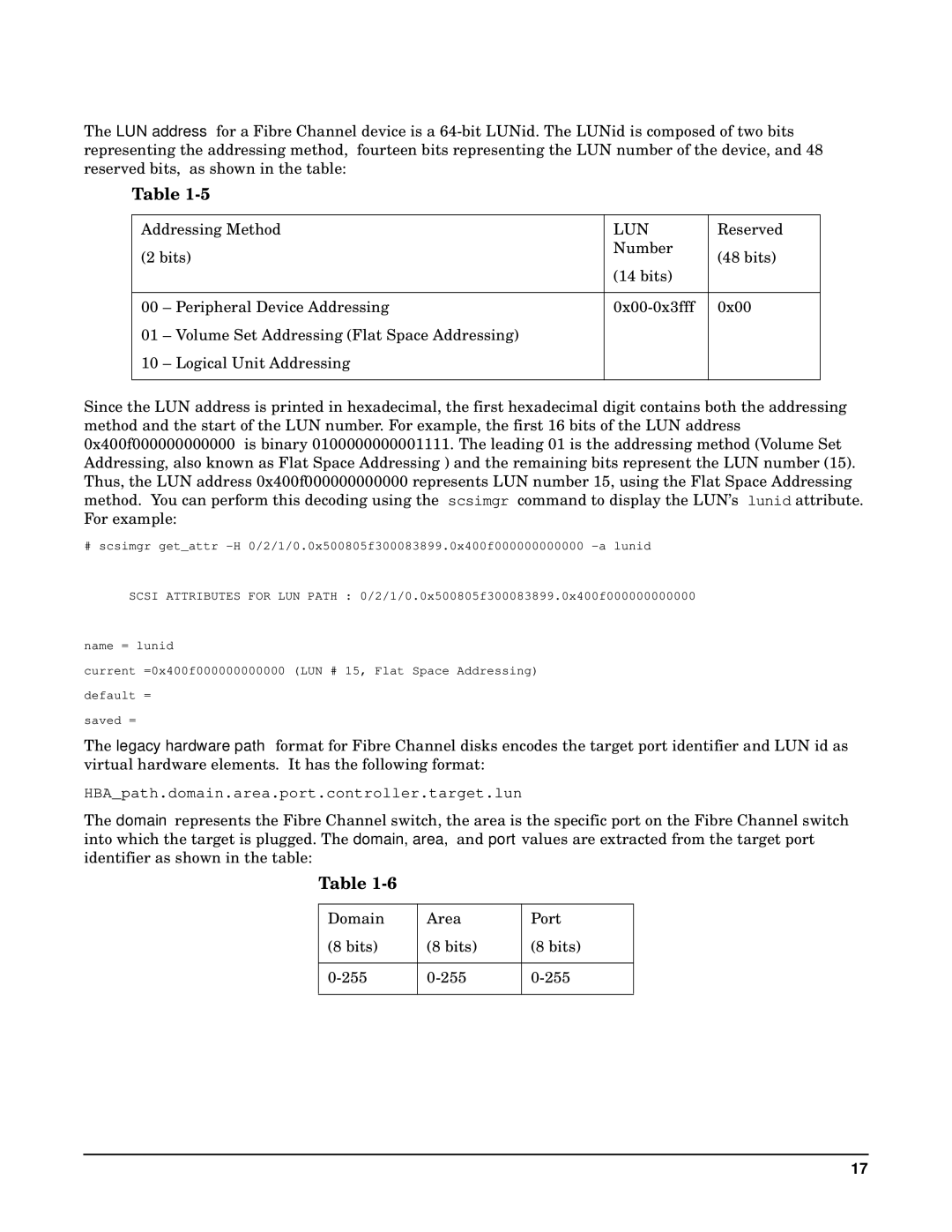The LUN address for a Fibre Channel device is a
Table
Addressing Method | LUN | Reserved | |
(2 bits) | Number | (48 bits) | |
| |||
|
| (14 bits) |
|
|
|
|
|
00 | – Peripheral Device Addressing | 0x00 | |
01 | – Volume Set Addressing (Flat Space Addressing) |
|
|
10 | – Logical Unit Addressing |
|
|
|
|
|
|
Since the LUN address is printed in hexadecimal, the first hexadecimal digit contains both the addressing method and the start of the LUN number. For example, the first 16 bits of the LUN address 0x400f000000000000 is binary 0100000000001111. The leading 01 is the addressing method (Volume Set Addressing, also known as Flat Space Addressing ) and the remaining bits represent the LUN number (15). Thus, the LUN address 0x400f000000000000 represents LUN number 15, using the Flat Space Addressing method. You can perform this decoding using the scsimgr command to display the LUN’s lunid attribute. For example:
# scsimgr get_attr
SCSI ATTRIBUTES FOR LUN PATH : 0/2/1/0.0x500805f300083899.0x400f000000000000
name = lunid
current =0x400f000000000000 (LUN # 15, Flat Space Addressing) default =
saved =
The legacy hardware path format for Fibre Channel disks encodes the target port identifier and LUN id as virtual hardware elements. It has the following format:
HBA_path.domain.area.port.controller.target.lun
The domain represents the Fibre Channel switch, the area is the specific port on the Fibre Channel switch into which the target is plugged. The domain, area, and port values are extracted from the target port identifier as shown in the table:
Table
Domain | Area | Port |
(8 bits) | (8 bits) | (8 bits) |
|
|
|
|
|
|
17
